Penta plants are a beautiful addition to any garden or landscape. Their vibrant, star-shaped flowers and attractive foliage make them a standout choice for plant enthusiasts. Propagation is the first step in growing Penta plants. This can be done through seeds or cuttings.
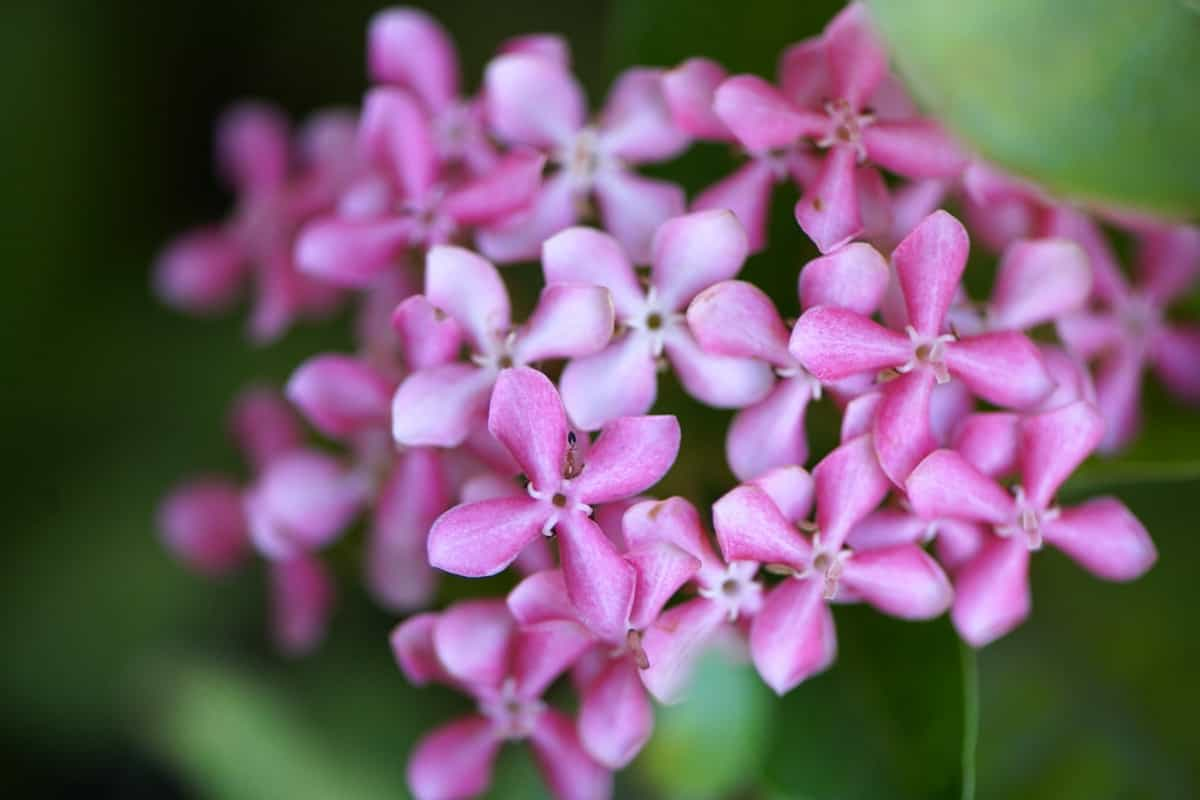
When it comes time to plant your Penta seedlings or cuttings, select an area that receives full sun or partial shade. Caring for your Penta plants involves regular watering and fertilizing. Growing Penta plants requires attention to detail but is relatively straightforward once you understand their requirements.
How to Grow Penta Plants
Propagating Penta Plants: From Seeds to Cuttings
If you’re eager to expand your collection of Penta plants, propagation is a fantastic way to do it. When starting Penta plants from seeds, it’s essential to choose fresh ones and provide them with the right conditions for germination. Soak the seeds in warm water overnight, which will help break their dormancy. Then, sow them in a well-draining soil mix and keep them consistently moist until they sprout.
On the other hand, if you prefer propagating Penta plants from cuttings, select healthy stems that are about four inches long. Dip the end of the cutting in rooting hormone before placing it in a container filled with damp soilless mix. Keep the cutting warm and humid until roots develop. Both methods require patience and care as you wait for new growth to occur.
Choosing the Right Location: Sunlight and Soil Requirements for Penta Plants
When growing healthy and vibrant Penta plants, choosing the right location is crucial. These beautiful flowers thrive in areas with full sun exposure, so select a spot that gets at least six to eight hours of direct sunlight each day. In terms of soil requirements, Penta plants prefer well-draining soil that contains rich organic matter. If your garden has sandy soil, consider adding some organic matter to help retain moisture and increase nutrient availability. It’s important to strike a balance between good drainage and moisture retention when preparing the soil for your Penta plants.
Planting Penta Plants: Step-by-Step Guide for a Successful Start
First, choose a location that receives full sunlight or at least six hours of direct sun each day. Penta plants thrive in warm climates and need plenty of light to bloom beautifully. Next, prepare the soil with a garden fork or tiller. Remove any weeds or rocks that may hinder the plant’s growth. Adding organic matter like compost will improve drainage and provide essential nutrients.
In case you missed it: How to Grow Fuchsias in Pots: Propagation, Planting, and Care
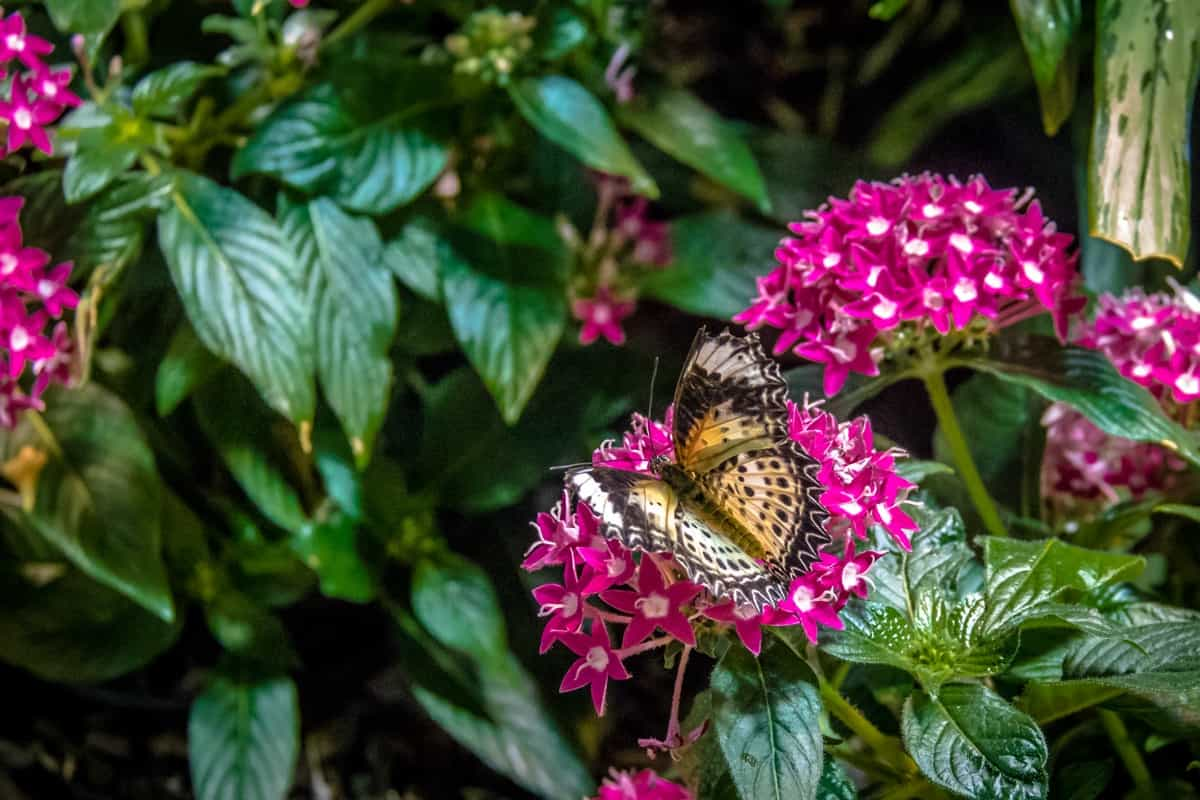
Dig a hole and gently remove the plant from the old container and place it in the hole, making sure it sits at ground level. Backfill with soil and gently tamp down around the base to secure it. Keep watering regularly during dry spells, but be careful not to overwater, as Penta plants prefer well-drained soil. Mulching around the base of your Penta plant helps retain moisture and suppresses weed growth.
Watering Penta Plants: Finding the Right Balance for Healthy Growth
First and foremost, it’s important to understand that Penta plants prefer consistently moist soil. However, they don’t like standing water or soggy conditions. To achieve this balance, make sure your Penta plants are planted in well-draining soil. In hot summer months, when temperatures soar and evaporation rates increase, it’s crucial to monitor the moisture level regularly. The general rule of thumb is to water deeply once a week during dry spells or as needed based on weather conditions.
Keep an eye on the foliage of your Penta plants as well. If leaves start wilting or turning yellow, it may be a sign that they need more water. On the other hand, if you notice leaf drop or fungal diseases such as powdery mildew or black spot developing on the leaves, it could indicate overwatering. Remember that every garden is unique, and factors such as climate, humidity levels, and soil composition can influence watering needs. So, take some time to observe your Penta plants closely and adjust your watering routine accordingly.
Best Fertilizers for Penta Plants: Nutrient Needs and Best Practices
When it comes to fertilizing Penta plants, understanding their nutrient needs is key. These vibrant flowering plants require a well-balanced fertilizer to thrive and produce abundant blooms. Look for one that has a balanced ratio of nitrogen (N), phosphorus (P), and potassium (K). Nitrogen promotes lush foliage growth, while phosphorus encourages strong root development and flower production.
Potassium helps improve plant health and disease resistance. In terms of application, it’s generally recommended to fertilize Penta plants every 4-6 weeks during the growing season, which typically spans from spring through fall. Organic fertilizers can be the best choice for Penta plants as they provide slow-release nutrients and help improve soil fertility over time. Compost or well-decomposed manure can be used as organic alternatives.
Pentas need slightly acidic soil with a pH range of 5.5-6.5. If your soil tends to be alkaline, you may amend it with sulfur or other acidifying agents before applying fertilizer. Remember not to apply too much fertilizer at once, as excessive amounts can lead to salt buildup in the soil, causing damage to roots and affecting plant health.
Pruning Penta Plants: Tips for Shaping and Encouraging Blooms
When it comes to pruning Penta plants, there are a few key tips to keep in mind. First and foremost, timing is essential. It’s best time to prune your Penta plants in the early spring before new growth begins. This allows for optimal shaping and encourages healthy blooms throughout the growing season. Start by removing damaged branches, as well as any crossing or rubbing stems. This will help improve air circulation within the plant and reduce the risk of disease. Next, consider shaping your Penta plant by selectively pruning certain branches.
In case you missed it: How to Grow Heuchera in Pots: Propagation, Planting, and Care of Coral Bells
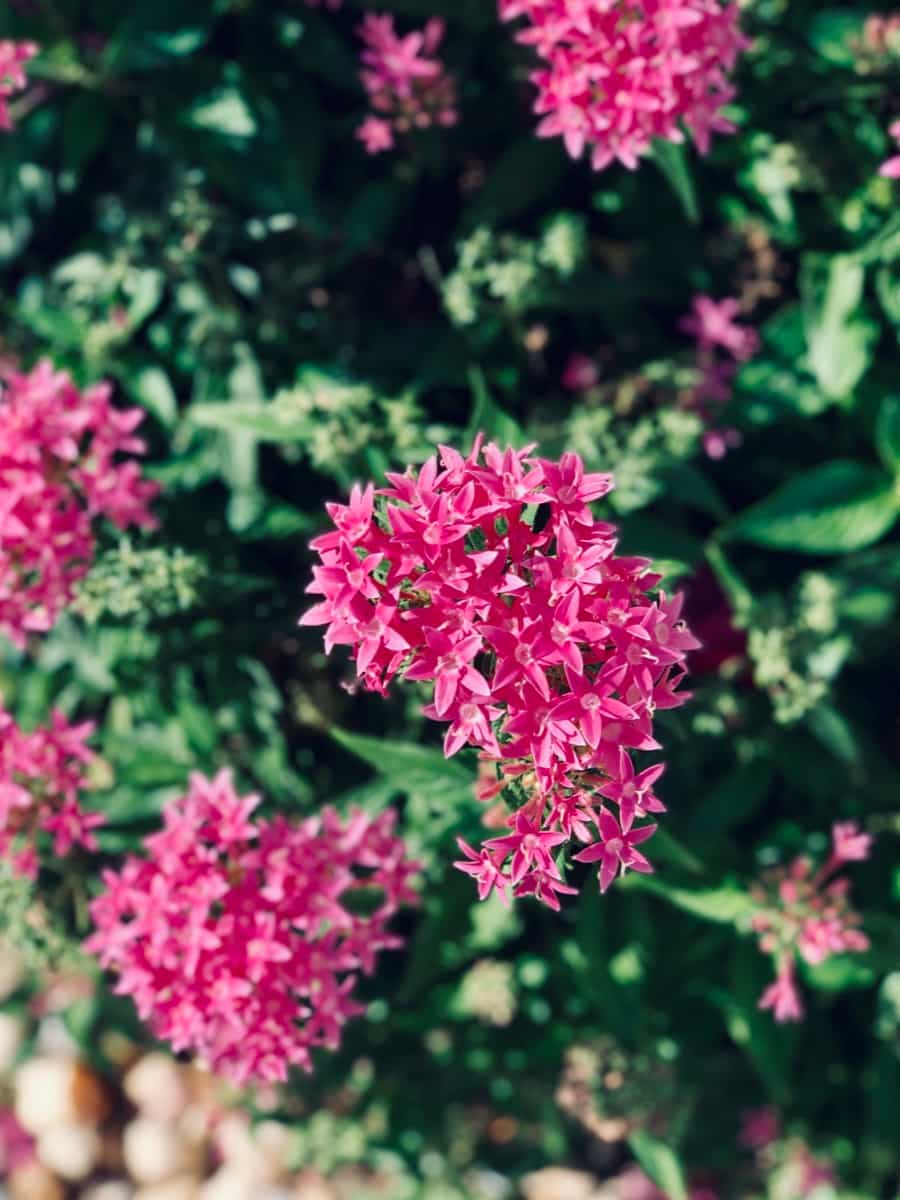
Aim for an open, airy structure that allows sunlight to reach entire parts of the plant evenly. This will promote better flower production and prevent overcrowding. While pruning, be mindful not to remove too much foliage at once. Gradual pruning over time is recommended, especially if you have established plants that require maintenance rather than rejuvenation. Removing spent flowers regularly not only keeps your Penta looking tidy but also encourages continuous blooming throughout the season.
Dealing with Pests: Common Insects and Diseases Affecting Penta Plants
Penta plants are generally hardy, but like any plant, they can fall prey to pests and diseases. It’s important to be vigilant to maintain the health and beauty of your Penta plants. One common insect that can wreak havoc on these plants is the aphid. These pests feed on the sap of the leaves, causing them to curl and distort. Another pesky intruder is the spider mite, which creates a fine webbing on the leaves while sucking out their juices.
Regular inspection is key to combating these invaders. Look for signs such as discolored or distorted foliage, sticky residue (a sign of aphids), or specks moving around (indicative of spider mites). If you spot an infestation early on, you have a better chance of controlling it. There are several strategies you can employ to tackle pest problems naturally without resorting to harsh chemicals.
For example, introducing beneficial insects into your garden can help control aphid populations by feeding on them. Additionally, spraying a mixture of water and mild dish soap onto affected areas can deter both aphids and spider mites. When it comes to diseases that may affect Penta plants, one common culprit is powdery mildew. This fungal infection manifests as white powdery patches on leaves and stems. To prevent powdery mildew, give your plants good air circulation by spacing them out adequately.
Overwintering Penta Plants: Preparing for Cold Weather
One of the first things you can do is provide a layer of mulch around the base of your Penta plants. This will help insulate their roots from freezing temperatures. Be sure not to pile mulch directly against the stems or trunk, as this could lead to rot. Another important step is pruning back any dead or damaged branches before winter arrives. By removing these weak areas, you’ll encourage healthy growth come springtime.
If you live in an area with particularly harsh winters, consider bringing your Penta plants indoors for protection. Find a sunny place near a window where they can still receive ample light and warmth. Remember to water them sparingly during this time since indoor conditions tend to be drier. Keep an eye on weather forecasts once winter sets in. If there’s an unexpected cold snap on its way, cover your outdoor Penta plants with burlap or frost blankets overnight for added insulation.
Companion Planting with Penta Plants: Ideal Pairings for a Stunning Garden
When creating a visually striking garden, companion planting can be a game-changer. Penta plants are known for their colorful blooms and ability to attract butterflies and hummingbirds. When choosing companions for your Pentas, consider plants that have similar growing conditions in terms of sunlight exposure and soil type. One ideal pairing is combining Pentas with Salvias.
In case you missed it: How to Grow Hawthorn Trees: Propagation, Planting, Pruning, and Winter Care
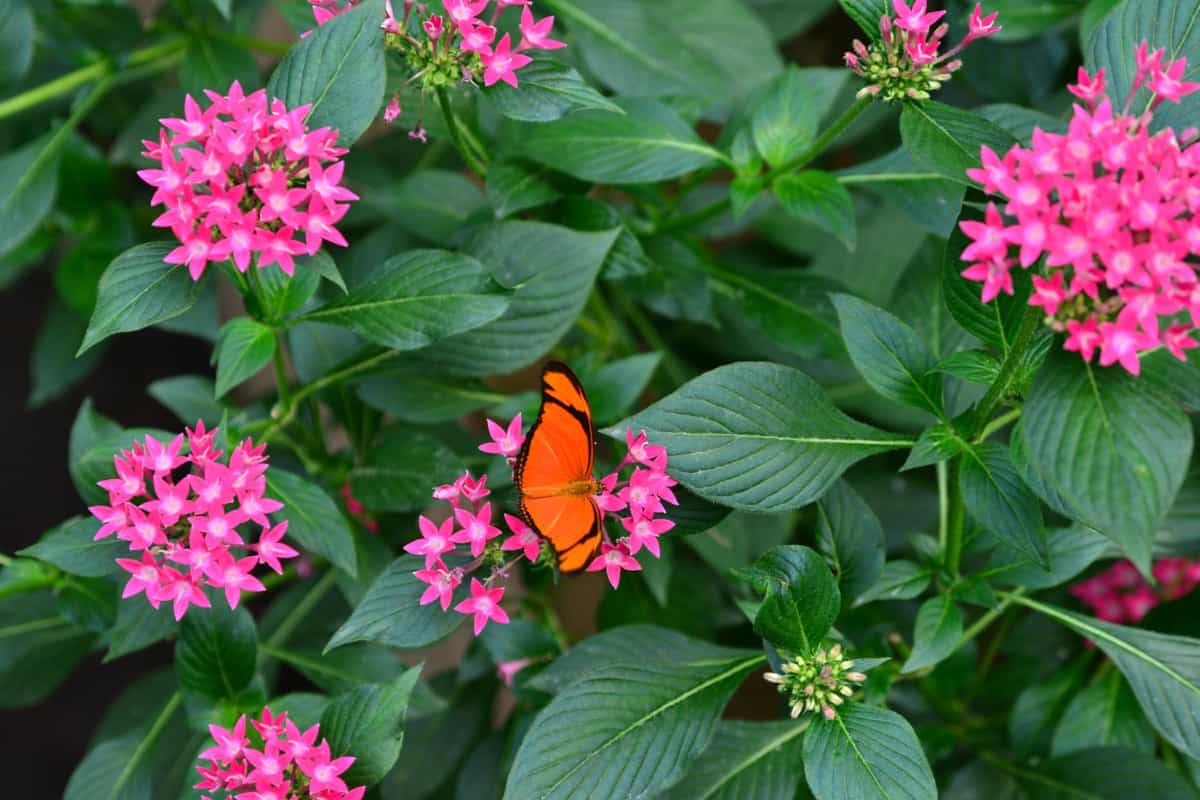
Both these plants love full sun and well-draining soil. The contrast between the rich red or pink hues of the Pentas alongside the deep purples or blues of Salvias creates an eye-catching display. For those seeking a more delicate aesthetic, try combining Pentas with Lantanas. Lantanas feature clusters of small flowers in shades ranging from yellow to purple, providing a lovely complement to the larger blooms of the Penta plants.
If you’re looking for height variation in your garden bed or border, consider pairing Pentas with tall grasses like miscanthus or fountain grass. The feathery plumes of these grasses add texture while allowing the bright colors of the Pentas to take center stage. For a touch of elegance, combine Pentas with white flowering annuals such as Petunias or Lobelias. This classic combination creates a stunning contrast between bold pops of color and crisp white blossoms.
Container Gardening with Penta Plants: Tips for Growing in Pots and Containers
When selecting a container for Penta plants, opt for one that provides adequate drainage. This will prevent waterlogged roots and potential rot. Choose a pot that is 12 inches wide to allow enough room for the plant’s root system to develop. Fill the container with high-quality potting soil mixed with organic matter. Ensure there are no gaps between the soil and container walls, as this could cause uneven watering.
Place your potted Pentas in an area that receives full sun exposure, preferably six hours or more per day. Keep in mind that these plants love warmth and thrive in hot climates. If you live in a cooler region, consider moving them indoors during colder months or when frost is expected. Watering is key when it comes to container gardening. Be sure not to overwater – Pentas prefer slightly dry conditions rather than soggy soil.
Water regularly once the top inch of soil feels dry, but avoid letting excess water sit at the bottom of the pot, as it can cause root rot. Regular fertilization is crucial for optimal growth and blooming of Penta plants grown in containers. Use a balanced fertilizer every four weeks during the growing season according to package instructions. This will provide necessary nutrients without overwhelming the plant.
Landscaping with Penta Plants: Incorporating Them into Your Outdoor Space
When creating a stunning outdoor space, incorporating Penta plants can add a vibrant and eye-catching element to your landscape design. One way to incorporate Penta plants into your landscaping is by planting them as borders or edging along pathways or garden beds. Their compact size and bushy growth habit make them perfect for defining spaces and adding pops of color.
You can mix different varieties of Pentas for an even more dynamic look. Another option is to create a dedicated Penta garden bed, where you can showcase these lovely plants in all their glory. Choose a place that gets full sun throughout the day and has well-drained soil. Plant the Pentas in groups or clusters, spacing them according to their mature size.
If you have larger outdoor spaces, consider using Penta plants as part of your overall garden design scheme. Combine them with other flowering perennials or ornamental grasses for a layered effect. The vibrant hues of the Pentas will contrast beautifully against the foliage of other plants, creating visual interest and depth within your landscape.
Enjoying Cut Flowers: Harvesting and Using Penta Blooms Indoors
Harvesting and bringing the vibrant blooms of Penta plants indoors can add a burst of color and life to any space. When harvesting Penta flowers, choose stems that have fully opened blossoms. Look for those with bright colors and no signs of wilting or damage. To ensure longer-lasting cut flowers, remove any foliage that would be below water level in your vase. Place the freshly cut Penta stems immediately into a container filled with water at room temperature. Change the water every couple of days to keep it fresh and clear.
In case you missed it: Calandiva Plant Care: Pruning, Propagation, and Indoor Care
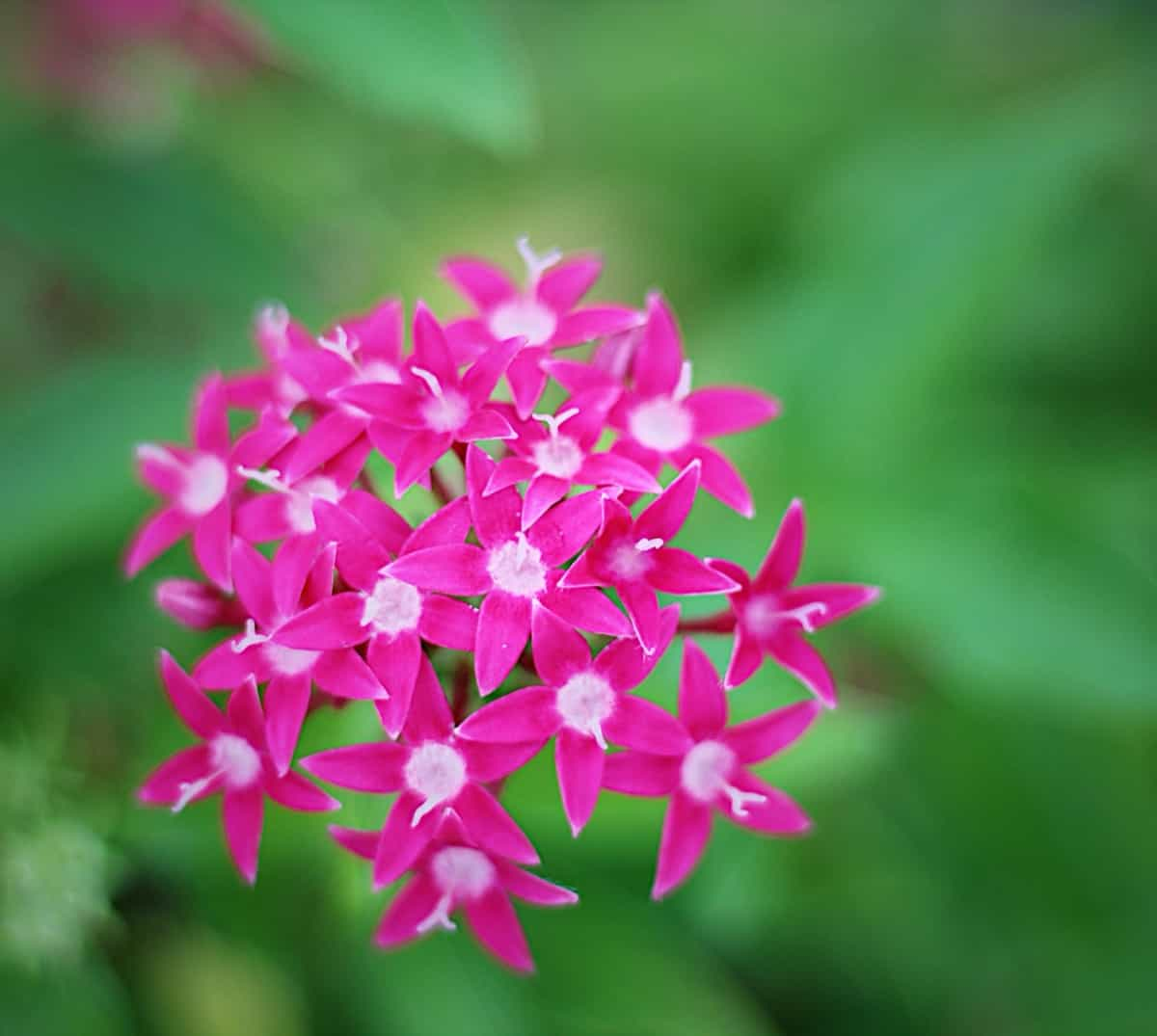
If you want your Penta blooms to last even longer indoors, consider using floral preservatives in the water. These packets contain nutrients that help prolong flower freshness by providing essential food for the cut stems. Pentas are versatile flowers that can be used alone as focal points or combined with other complementary blooms in stunning arrangements. Their vibrant hues make them perfect for adding pops of color to bouquets or centerpieces.
Troubleshooting Common Issues: Addressing Challenges in Growing Penta Plants
One issue you may face is root rot, which occurs when the soil around the roots becomes waterlogged. To prevent this, make sure your Penta plants are not overwatered and that they have well-draining soil. Another common problem is powdery mildew, it appears as a white powdery coating on the leaves. To combat this issue, ensure proper air circulation by giving them enough space to grow and removing any infected foliage promptly.
Aphids and spider mites can also pose problems for Penta plants. If necessary, you can use insecticidal soap to control these pests without harming beneficial insects. Nutrient deficiencies can hinder the growth of Penta plants. If you notice yellowing or stunted growth, it may signify a lack of essential nutrients like nitrogen or iron in the soil. Applying a balanced fertilizer can help address these deficiencies and promote healthy growth.
Conclusion
Growing Penta plants can be a rewarding experience for any gardener. With their vibrant blooms, attractive foliage, and ability to attract pollinators, Penta plants are a great addition to any garden or outdoor space. Remember to enjoy the process of nurturing these beautiful flowers from start to finish.
Harvesting cut flowers allows you to bring their colorful blooms indoors, where you can appreciate them even more. While challenges may arise along the way, troubleshooting common issues ensures that your Penta plants stay healthy and continue blooming year after year.
- How to Grow Hibiscus from Flower
- Plantation Ideas for Home Decoration: A Beginners Guide
- Flower Garden Designs and Layouts for Beginners
- Planting and Spacing Techniques in Papaya: A Beginner’s Guide
- Growing Gold: Essential Techniques for Planting Pineapples
- How to Make Kalanchoe Plant Bushy: Home Remedies and Solutions
- 11 Reasons Why Your Gardenia is Not Blooming: Home Remedies and Solutions
- Eco Elegance: The Guide to Designing a Drought-Tolerant Landscape
- Gardening on a Slope: Strategies for Hillside Landscaping
- Nourish and Flourish: Top Organic Mulches for Thriving House Plants
- Everything You Want to Know about Indian Mogra Flower: Discover Uses and Growing
- Green Thumb Success: Expert Tips for Cultivating Greenhouse Pumpkins All Year Round
- Maximize Growth & Flavor: The Ultimate Guide to Companion Planting in Herb Gardens
- How to Control Rhododendron Problems Naturally: Home Remedies and Organic Ways to Fix Them
- Natural Magic: The Remarkable Benefits of Cinnamon for Plants
- Best Steps to Revive Dying Tulip with Natural and Organic Treatment
- 10 Reasons Why Your Angel Trumpet is Not Blooming: Remedies and Treatment
- How to Fix Periwinkle Leaf and Flower-Related Problems: Natural Remedies and Solutions
- How to Fix Zinnias Leaf and Flower Problems: Discover Natural and Home Remedies
- Organic Steps to Induce Lemon Tree Flowers: A Comprehensive Guide
- Bloom Booster: Crafting the Perfect Homemade Bougainvillea Fertilizer
- Optimizing Growth: A Guide to Applying NPK Fertilizer for Potted Plants
- 10 Best Homemade Fertilizers for Rubber Plant: DIY Recipes and Application Method
- How to Boost Female Pumpkin Flowers: Effective Steps for More Flowers and High Yields
- Transform Your Indoor Garden: Top Benefits of Pink Salt for Houseplants
- 10 Best Homemade Fertilizers for Peacock Plants (Calathea): Easy DIY Guide
- Unlock Blooms: 9 Reasons Why Your Potted Chrysanthemum is Not Blooming
- 8 Reasons Why Your Potted Hibiscus is Not Blooming: Fix it with Simple Solutions
- Unlock Blooms: 9 Key Reasons Your Potted Frangipani Won’t Flower
- 10 Reasons Why Is My Ice Plant Not Blooming: Remedies and Treatment
- 10 Reasons Why My Potted Hydrangea Not Blooming: Treatment and Remedies
- 10 Reasons Why is My Wisteria Not Blooming: Remedies and Treatment
- 10 Reasons Why is My Goldfish Plant Not Blooming: Remedies and Treatment
- Maximize Your Space: Ultimate Guide to Balcony Gardening with Grow Bags
- 10 Reasons Why Your Iris is Not Blooming: Remedies and Treatment
- 10 Reasons Why Your Anthurium Plant is Not Blooming: Treatment and Remedies